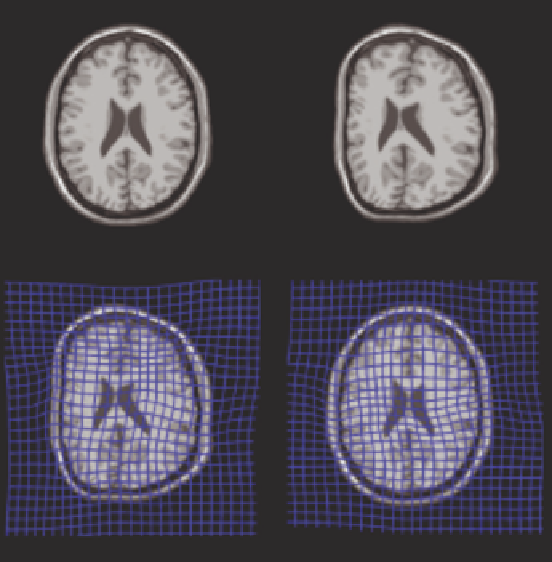Graphics Reference
In-Depth Information
Figure 5.2.
An example of image registration where the goal is to align two images or
volumes. The registration algorithm used here is called the Morphon; it takes advantage
of quadrature filters to detect edges and lines to estimate the displacement between two
images or volumes. Quadrature filters are non-separable and can for example be of size
9
×
9
×
9 voxels for volume registration. An axial brain MRI image is shown at the top left,
with an artificially warped version of the same image at the top right. The task for the
registration algorithm is to align the two images by finding an optimal field deforming
one into the other. At the bottom left, the warped image is shown again, overlaid with
the artificial deformation field used to create it. The output of the registration procedure
appears at the bottom right, overlaid by its computed deformation field. The algorithm
has recovered the original image and also generated a deformation field that inverts or
cancels the artificial field. [This example was kindly provided by Daniel Forsberg.]
5.2 Non-separable Filters
Filtering can be divided into separable and non-separable variants. Popular sepa-
rable filters are Gaussian filters (used for smoothing/blurring to reduce noise and
details) and Sobel filters (used for detection of edges). Filter kernels for Gaussian
(G) smoothing and edge detection along
x
and
y
using Sobel (S) filters can be









